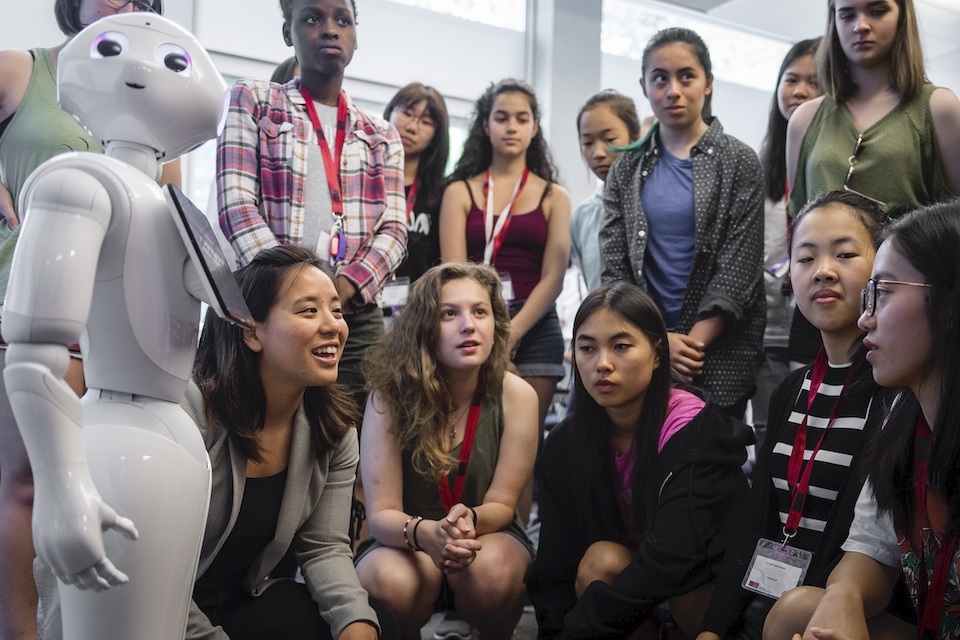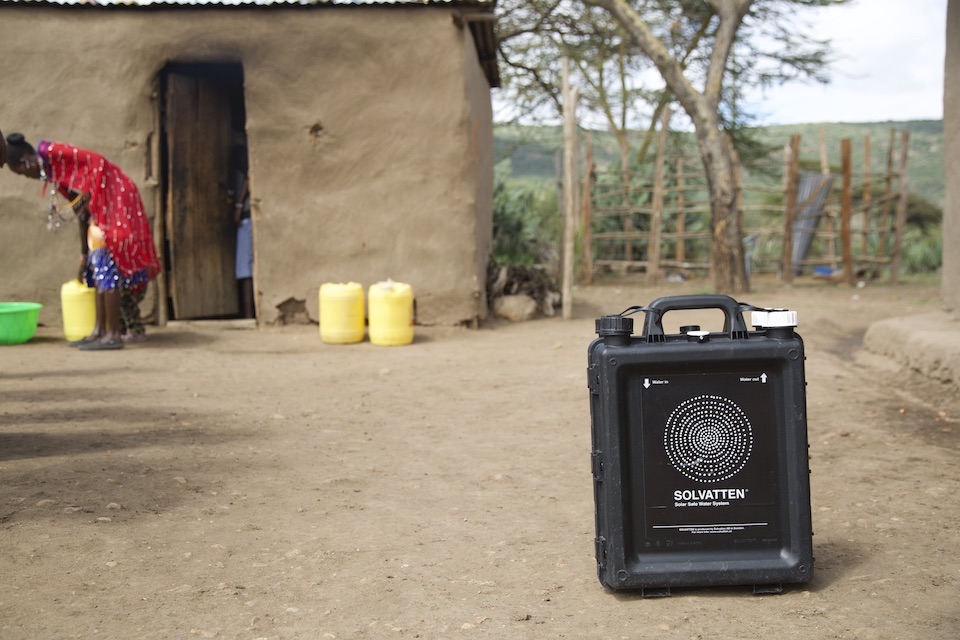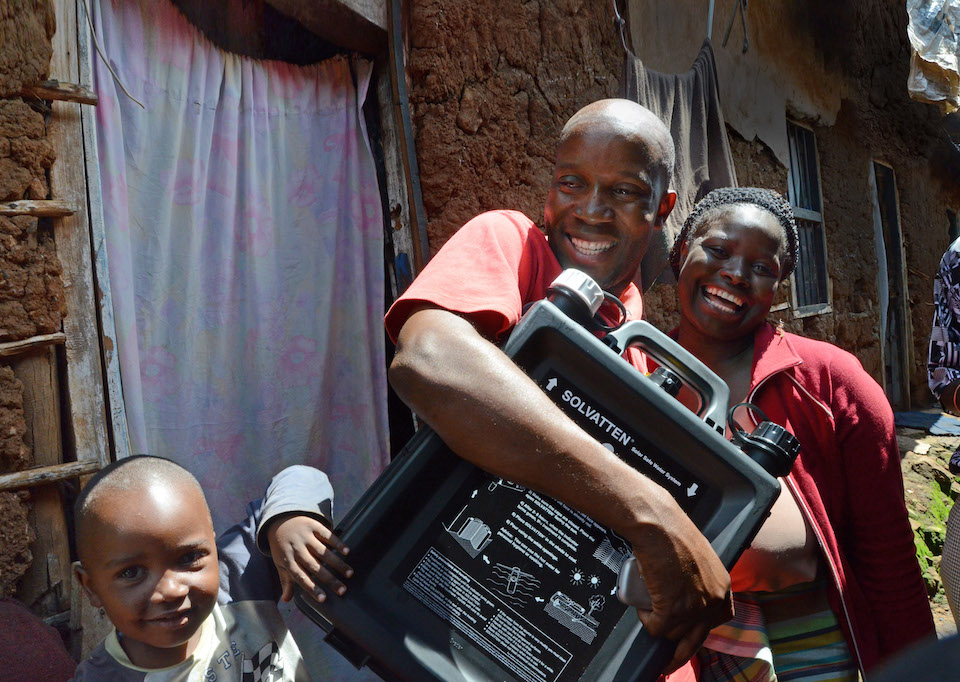
At a time when ambitious missions to Mars are attracting billions in investment, the people racing to scale ideas that might save our own planet still struggle to find funding.
It’s not a lack of imagination that’s holding them back. It’s a lack of commitment on a cultural and financial level. But recently, we’ve been seeing renewed urgency to tackle some of our most pressing problems.
In January, Microsoft announced that they plan to be carbon negative and will remove all the carbon dioxide the company has released into the atmosphere. In February, Amazon CEO Jeff Bezos pledged to give $10 billion to scientists, NGOs, and activists working to reverse climate change. This month, some are calling on a tech leader to shift focus from rockets to ventilators as overwhelmed hospitals face shortages in the midst of the COVID-19 outbreak.
There are many other entrepreneurs and inventors using technology to change the world for the better. Today, we’d like to shine a light on three that are dedicated to making a positive impact.
Capturing carbon to fight climate change
While many climate change problem solvers are focused on finding alternative energy sources to prevent future emissions, some are working on ways to clean up the damage already done.
Climeworks is a Zürich-based company that has developed direct air carbon capture technology to physically remove CO2 emissions. Before becoming Communications Manager at Climeworks, Louise Charles had worked with organizations ranging from startups to the United Nations Research Institute for Social Development. But when she heard about Climeworks, she was so impressed with the founders’ vision and the team’s ability to achieve significant growth in their first decade, she decided to join the company.
“Climeworks started at a small scale in laboratories where we were capturing milligrams a day,” she says. “We're now at commercial scale with plants capturing thousands of tons.”
“We could build these machines in the middle of the desert where we have solar. As long as we have had some kind of renewable clean energy source, you can build them anywhere.”—Louise Charles of Climeworks
Charles says the way their direct air capture technology works is relatively simple. They build CO2 collectors that are roughly the size of a smart car. The machine has a fan on one side that draws ambient air inside where highly selective filter material captures CO2 on its surface.
The filter material is like a sponge soaking up water, says Charles. “Once it's fully saturated, we close the collector and heat it to 80 degrees Celsius or thereabouts. Through the application of heat, the bond is broken between the CO2 molecule and the filter material. We can then collect that CO2 in a high concentration, high purity form.”
Charles says Climeworks doesn’t view their direct air capture technology as a substitute for any other solution, but as part of a portfolio of different solutions.
“We will be needing all these solutions to work together,” she says. “One of the solutions is direct air capture. It does have advantages in that we need a very small surface area to build our machines, which can be quite efficient. We're very much for planting more trees. But one direct air capture CO2 collector is about 2000 times as efficient as a tree, and requires a lot less surface area. We require no water. Because we have this modular system, we can build plants by stacking our CO2 collectors. Six of them fit quite nicely into a shipping container.”

Another advantage is that Climeworks can build their direct air capture technology anywhere they have a clean energy source. “We could build these machines in the middle of the desert where we have solar,” says Charles. “We can build them on barren land. As long as we have some kind of renewable, clean energy source, you can build them anywhere.”
After capturing CO2 from the air, Climeworks can then sell it to other companies for use in their products. “These are companies that are wanting to transition away from using fossil CO2 to using a more sustainable source of CO2, such as CO2 from air,” says Charles. “Those companies include ones in the agricultural sector. Greenhouses use CO2 as an airborne fertilizer. The higher the CO2 concentration, the better crops can grow.”
Charles says Climeworks has also been working with beverage companies such as Coca-Cola HBC Switzerland who use Climeworks CO2 to carbonate their sparkling mineral water.
“There are more industries than people realize that use CO2 as a feedstock or raw material for their products,” she says. “Another industry where we have several projects ongoing is the renewable fuels industry. We have a handful plants in operation where we capture the CO2 from air, then we provide that CO2 for fuel synthesis. Our partners in these projects are then able to create CO2 neutral fuel.”
Though oil companies such as Exxon and Chevron have signaled strong support for carbon capture technology, Climeworks CEO and Co-Founder Jan Wurzbacher told the Wall Street Journal he sees “a strong danger of a moral hazard.” This is why Climeworks made the decision not to sell its carbon dioxide to oil companies.
“We don't see this technology as an excuse to continue emitting,” says Charles. “It's needed for emissions that are otherwise difficult to avoid. One of our two business cases is capturing CO2 from air and selling it on. Our secondary business case is combining our technology with storage. Currently in Iceland, we have a project with with the company CarbFix. There, instead of recycling the CO2, it’s being permanently removed from the air and stored underground via rapid mineralization.”
The Climeworks machines capture the CO2, then CarbFix mixes the CO2 with water and injects the fizzy water into underground basalt rock formations. The CO2 turns into stone within about two years.
"With the coronavirus, some of our students are doing a research project on it that helps us more quickly diagnose disease and deal with large amounts of data that humans aren’t able to sort through.”—Tess Posner of AI4ALL
“There's a natural chemical reaction that takes place between the fizzy water and the basalt deep underground,” Charles explains. “It’s mineralized safely away. It cannot leak. It's very promising. What we have in Iceland is currently a pilot plant, small scale capturing and storing just 50 tons a year. But within the next 12 months, we’ll be expanding operations and capacity in Iceland for larger scale capture and storage of CO2.”
Charles says she expects that in the years to come, the biggest challenge will be scaling up. “In the last 10 years, we have achieved quite a nice scale up from these milligrams of CO2 on a lab scale. Now we’re capturing thousands of tons of CO2. The challenge lies in replicating that same kind of scale up—moving from capturing thousands of tons to hundreds of thousands, and at some point, millions, even billions of tons to become truly climate relevant.”
Charles said she feels like we may be at a turning point where green tech is starting to attract more support and attention. “What was instrumental and pivotal for our technology, looking back to two years ago, were various climate reports that came out. We had these climate scientists stating really explicitly for the first time that this kind of technology is needed to make global climate targets. That has triggered a wave of support across the board, including from the private sector. Also, corporations are setting very ambitious climate targets, and including direct capture technology in their portfolio of solutions.”
Teaching students to use AI for good
As CEO of AI4ALL, Tess Posner is on a mission to make sure artificial intelligence is developed responsibly—and that more diverse people will have a hand in shaping the direction of the industry.
“We know that AI technology is one of the most critical forces that will impact every industry in every part of our economy, and will get incorporated into our everyday life,” says Posner. “Over 80% of Americans use AI technology regularly, according to Gallup. A lot of times, it might be in ways you don't even realize, because it's really becoming more common.”
What Posner finds most interesting about AI is that it's powering decision-making systems. Increasingly, it’s becoming incorporated into interviews and hiring policies, financial systems, and even credit scoring algorithms.
“At the same time, we've seen all this research about racial and gender bias creeping into AI systems,” says Posner. “On the one hand, AI is becoming more embedded into the ways that people access key aspects of the economy, like employment or credit. On the other hand, there are issues of race and gender bias. That's a huge problem that could exacerbate existing equity issues in the economy and marginalize certain groups.”
Posner believes part of the solution is solving the diversity crisis. “Our mission is to foster the next generation of diverse leaders in AI and ensure that we have voices shaping this technology that truly represent our society,” she explains. “With that, we’ll see a more creative set of solutions, and a wider array of problems being solved with AI. It will mitigate some of these issues by having the right people in the room who can make equitable decisions.”

That’s why she and the people at AI4ALL have been focused not only mitigating the risk of bias and other ethical issues, but also maximizing the positive potential for AI, and its ability to solve important problems in the world.
“I'm really interested in how AI can be used to address some of the major challenges where enhancing our capabilities can be really powerful,” she says. “For example, with the coronavirus, some of our students are doing a research project on it that helps us more quickly diagnose disease and deal with large amounts of data that humans aren’t able to sort through.”
AI4ALL has also released a new, free, online curriculum that high school teachers can use to explore the role AI can play in addressing the COVID-19 epidemic with their students. For classrooms that are currently remote, this lesson and the online discussion forums provide a good place to encourage student interaction.
“When time is of the essence like it is with this virus, it's even more important that we have those capabilities to take on global issues like health care and climate change,” says Posner. “Health care is one of the areas where I'm most excited about the potential for AI because you are dealing with so much data that can be used to make faster diagnoses, or help enhance the capacity of doctors.”
Posner says this is especially important because healthcare shortages disproportionately impact lower income areas. “To me, it's about solving issues around equity and access and how those intersect with things like climate change and healthcare. AI is an opportunity to help us more quickly solve some of those issues.”
One of the biggest challenges for AI4ALL is demystifying the field and countering the media narrative. “The people that are lifted up as experts are a pretty homogenous group,” she says. “We tend to hear the more negative side, like AI is going to take all of our jobs, or it's going to be a Terminator scenario. It doesn't really showcase the amazing work of other people in the field, especially women and people of color, and showcase what other things can be done with AI if it's applied correctly.”
To highlight the positive potential and show how AI could enhance human capabilities to address problems, AI4ALL runs summer camps in AI labs at several universities. “They bring high school students in for a two- to three-week experience where they get to work on AI for Good projects,” she explains. “These are things like identifying fake news, analyzing genes in service of disease prevention, identifying potential risks for cancer, and coordinating aid after a natural disaster.”

As a nonprofit, AI4ALL gets funding from corporate foundations, corporate sponsors and individuals. One reason Posner thinks nonprofits always struggle with funding is that investors are drawn to big, exciting ideas that get a lot of media attention. “Things that are solving more ongoing, complex problems are always harder to fund because they don't have a clear black and white solution and they take long-term thinking and long-term investment.”
AI4ALL is committed to the long term, though, and working to educate the next generation of leaders. “In our culture, we're very obsessed with short term quick results,” she says. “It's not going to be that easy. I think finding people who care about the actual change that needs a longer runway is critical. There's always going to be fewer of those people because there’s less media attention and splashiness this around it. But I'm hopeful because I do feel like if we come together, and we do invest, we can change this. So it's really just a matter of making a decision and taking collective action.”
Using solar power to provide clean water
In the early 90s, Swedish inventor Petra Wadström and her family were living in Australia when she had an epiphany inspired by the intense sunlight surrounding her. She came up with an idea to use sunlight to heat and purify water.
She created a small, portable "jerry can" that could be used by people living in extreme poverty in remote areas where many have to spend much of their day walking long distances to collect water.

"We'd like to tell the world about how you can still get things done with limited resources."—David Wadström of Solvatten
After conducting trials in Africa and Asia, Petra and her team were able to prove the efficiency of Solvatten, and it’s now being used by over 370,000 people in more than 20 countries.
“It's not the the usual water NGO where you do workshops and conferences and discussions about policy papers. This is really hands on and practical, and I love that aspect of this,” says David Wadström, Head of Public Relations and Communication at Solvatten.
With a background in film and TV production, Wadström brings his love of storytelling to his job. He especially appreciates having the chance to spotlight the people who have been using Solvatten to help their families and communities.
"We'd like to tell the world about how you can still get things done with limited resources,” he says. “We want to bring that message to everybody. No matter how small you may feel or how overburdened you may be by climate change and poverty and how the world is looking, there's no excuse not to try to do something. Because we need everybody to join in.”
When Wadström first joined Solvatten in his early 20s, he traveled to a number of places and brought prototypes to test them in Cuba, Barbados, and South Africa.
“That was about 15 years ago. Now we have reached around 370,000 people benefiting from day to day, most of them in Sub-Saharan Africa,” he says. “My brother is in Kenya right now, doing field work and meeting all the beneficiaries. He can see three, four years later, people are still using the technology. That's such wonderful evidence that people are really keen to use them.”

Wadström says one of the keys to making sure new technology like Solvatten gets adopted is finding role models. “We call them the change makers,” he says. “They get the technology and understand how they can change the lives of their family and neighbors. These change makers are often of the time women. They are suffering from outdated traditions in society that are locking them down and keeping them from being able to having the same legal status as men when it comes to land rights and much more.”
One of these change makers is Nancy, a mother of four living in Kenya. In addition to dealing with the problem of providing clean water for her family, she was encountering societal pressures about the brutal tradition of FGM/C. By standing her ground and refusing to let that happen to her daughters, she gained the respect of her whole community.
“Now a lot of women throughout in the community talk with her, get her support and ask for her advice,” says Wadström. “She can move the needle on this bad tradition to face that down and bring in some good ones instead. She said ‘I'm proud to be Kenyan because we have a culture of sharing. We are neighbors. We always share. Now she can share Solvatten and the empowerment that she has. She feels confident and proud that she's been able to stand up for her family. She can provide clean water to her family. She has this technology and even the men are wanting to be taken care of. So the water is changing the whole society.”
Wadström shares stories of change makers like Nancy in newsletters that go out to their sponsors, who in turn, share the stories on their social media channels on important dates, such as World Water Day. The sponsors become de facto ambassadors spreading the word about Solvatten to their networks.
Though Wadström sees both the good and bad sides of technology, he says “I'm a believer that we’ll be able to fix stuff. We are prioritizing the right things. When you hear tech pioneers are shooting for Mars, we should really be doing things here on Earth.
As the father of two young children, Wadström says that though he’s an optimist about the potential for technology to help humanity, it's important to get his children to understand that we have to do this together as a species. “We have a purpose. We should be feeling purpose in our lives. We can't fight about the limited resources. We have to find a way to to share them.”
To learn more about the work these companies are doing, visit Climeworks.com, ai-4-all.org, and Solvatten.org.



